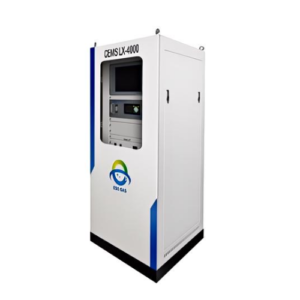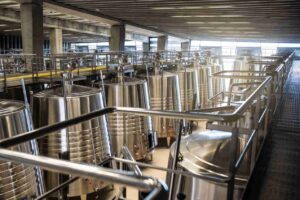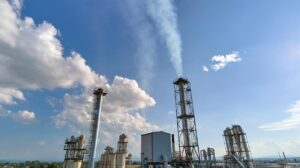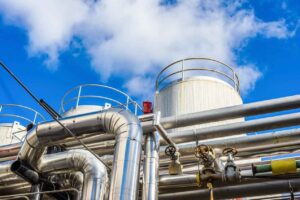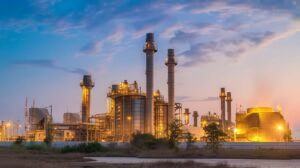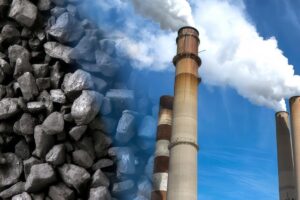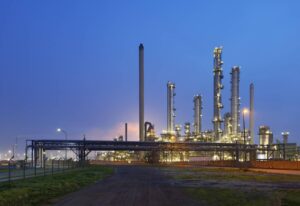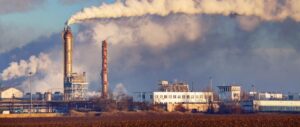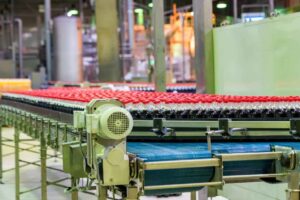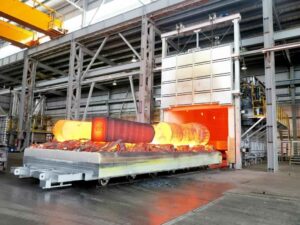As global awareness of environmental protection increases, industrial emission standards are becoming increasingly stringent, especially in the cement and glass manufacturing industries, which have received special attention due to their high energy consumption and large emissions. Continuous Emission Monitoring Systems (CEMS) have therefore become an indispensable tool for these industries. This Blog will explore the application of CEMS in the cement and glass manufacturing industries and analyze its key role in helping companies achieve environmental standards and optimize production processes.
CEMS System Overview
CEMS is a high-tech monitoring device used to monitor pollutant concentrations and emissions in industrial emissions in real-time. These systems can monitor a variety of gases, such as sulfur dioxide (SO2), nitrogen oxides (NOx), carbon monoxide (CO), carbon dioxide (CO2), and particulate matter. The main components of CEMS include sampling equipment, analytical instruments, data acquisition and processing systems, etc.
CEMS Application in the Cement Manufacturing Industry
Environmental Challenges in Cement Manufacturing
Cement manufacturing is an industrial process involving high-temperature calcination of limestone, clay, iron ore, and sand as the main raw materials. In this process, not only a large amount of energy is consumed, but also pollutants such as carbon dioxide, nitrogen oxides, and sulfur dioxide, as well as some particulate matter and heavy metals are produced. These emissions have serious impacts on the environment, such as acid rain, the greenhouse effect, and local air quality deterioration. Therefore, it is crucial to effectively monitor and control these emissions.
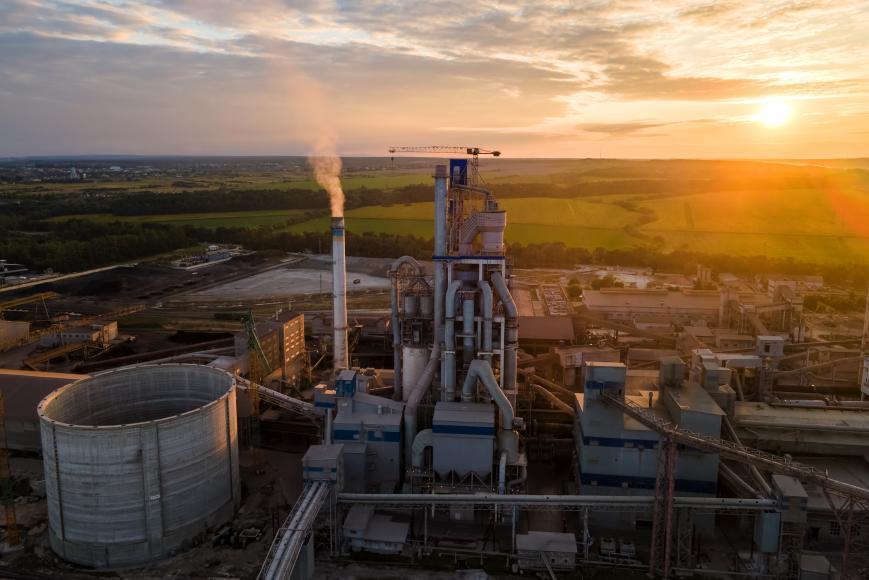
Core functions of the CEMS system
The core function of the continuous emission monitoring system (CEMS) is that it can provide real-time emission data, which is an important means for cement plants to manage and optimize the production process. The CEMS system usually includes the following key components:
- Sampling system: A gas sample is continuously drawn from a factory’s chimney or exhaust duct.
- Analytical instruments: Analyze the concentration of specific pollutants in the sample. Commonly used techniques include infrared spectroscopy, chemiluminescence, ultraviolet absorption spectroscopy, etc.
- Data Logger: Records monitored data and convert it into a report format for review by environmental authorities or plant management.
Application examples in cement manufacturing
- Monitoring location
In cement plants, CEMS is usually installed in the following key locations:
Rotary kiln: The core part of clinker production, with extremely high temperature, producing large amounts of NOx and CO.
Cooler outlet: Trace amounts of harmful gases may also be produced during the clinker cooling process.
Coal mill and kiln tail: Coal is one of the main fuels, and incomplete combustion will produce SO2 and CO.
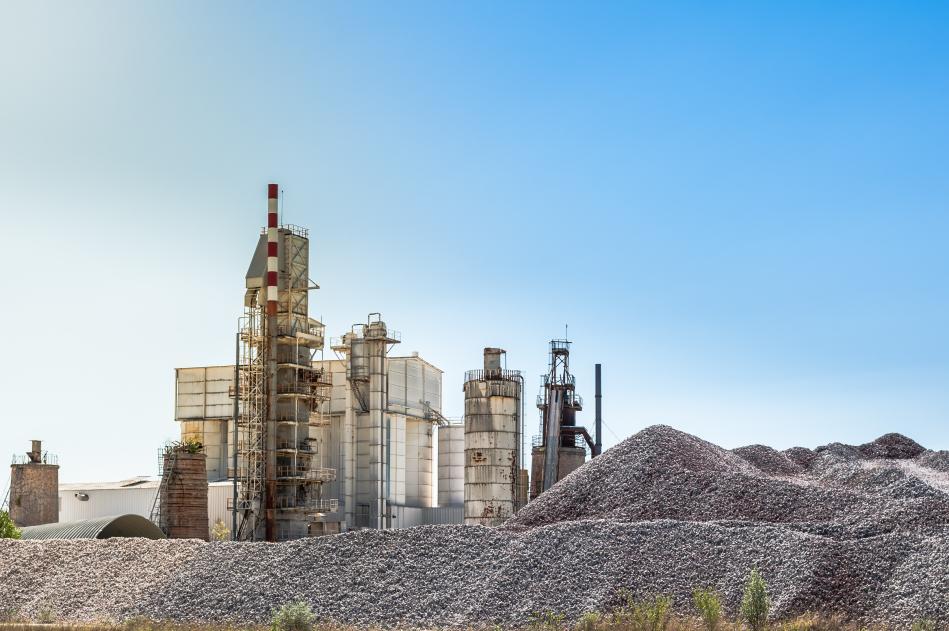
Production process optimization
By monitoring data in real-time, operators can adjust key variables in the production process, such as fuel mix ratios, kiln operating parameters, etc., to reduce pollutant generation. For example, by adjusting the oxygen level in the kiln, combustion efficiency can be optimized, thereby reducing NOx generation.
Environmental Compliance and Reporting
The data provided by CEMS helps cement plants ensure that their operations comply with local and international environmental regulations. The recording and analysis of real-time data can also be used for environmental compliance reporting, which is essential to maintaining the plant’s operating license.
Challenges and future development of CEMS technology
- Technical Challenges
High temperature and dusty environment: The high temperature and dust content in cement plants place higher demands on the stability and accuracy of equipment.
Complex gas composition: Mixed measurement of multiple pollutants requires highly accurate and reliable analysis technology.
- Future development
Intelligence and automation: With the development of artificial intelligence and data analysis technologies, future CEMS systems may become more intelligent, able to provide more in-depth data analysis and predictions, helping to further optimize production processes and reduce emissions.
Higher measurement accuracy and reliability: The development of new sensors and analytical technologies will make CEMS devices more stable and reliable in harsh environments.
The application of CEMS in the cement manufacturing industry not only helps companies meet the requirements of environmental regulations but also optimizes the production process and reduces environmental pollution through real-time monitoring and data analysis. In the future, with the advancement of technology, the application of CEMS will be more extensive and efficient, helping to promote the entire industry to develop in a more environmentally friendly and sustainable direction.
CEMS Application in the Glass Manufacturing Industry
Environmental Challenges in the Glass Manufacturing Industry
Glass manufacturing is a process that involves melting silica sand, sodium carbonate, limestone and other auxiliary materials at high temperatures into liquid glass. This process is energy-intensive and emits large amounts of nitrogen oxides (NOx), sulfur dioxide (SO2), carbon dioxide (CO2), as well as some heavy metals and particulate matter during production. Control of these emissions is crucial to meeting environmental requirements and maintaining production efficiency.
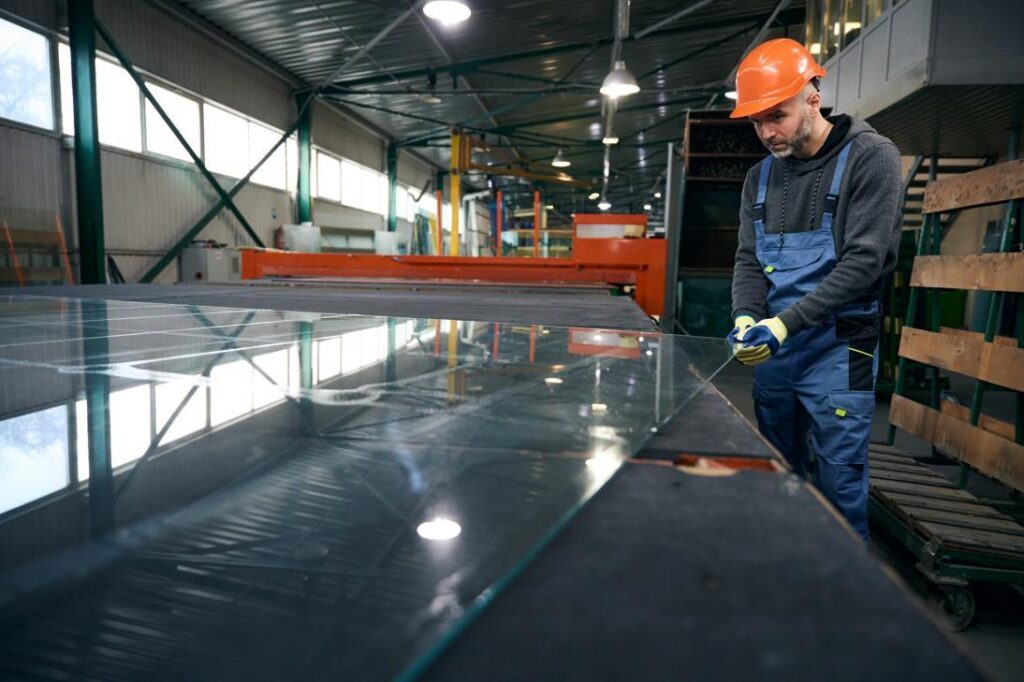
Core functions of the CEMS system
In the glass manufacturing industry, continuous emission monitoring systems (CEMS) are primarily used to monitor emissions from furnaces and processing facilities to ensure that these emissions do not exceed regulatory limits. CEMS systems include sampling devices, analytical instruments, and data logging systems that work together to monitor and record emission data in real time.
Application examples in glass manufacturing
- Monitoring Location and Technology
Monitoring location: CEMS is usually installed in the exhaust system of a glass furnace. This location can effectively monitor all key emissions generated by the furnace, including NOx and SO2.
Technologies used: To operate effectively in environments with high temperatures and corrosive gases, CEMS uses advanced technologies such as ultraviolet spectroscopy (UV), non-destructive infrared spectroscopy (NDIR), and chemiluminescence, which can accurately measure gas composition and provide real-time data.
Production process optimization
The data provided by the CEMS system enables factory managers to adjust production parameters based on real-time emission data. For example, by adjusting the supply of combustion air or changing the raw material ratio, the generation of NOx can be effectively controlled. In addition, accurate emission data can also help factories optimize energy use and reduce energy waste.
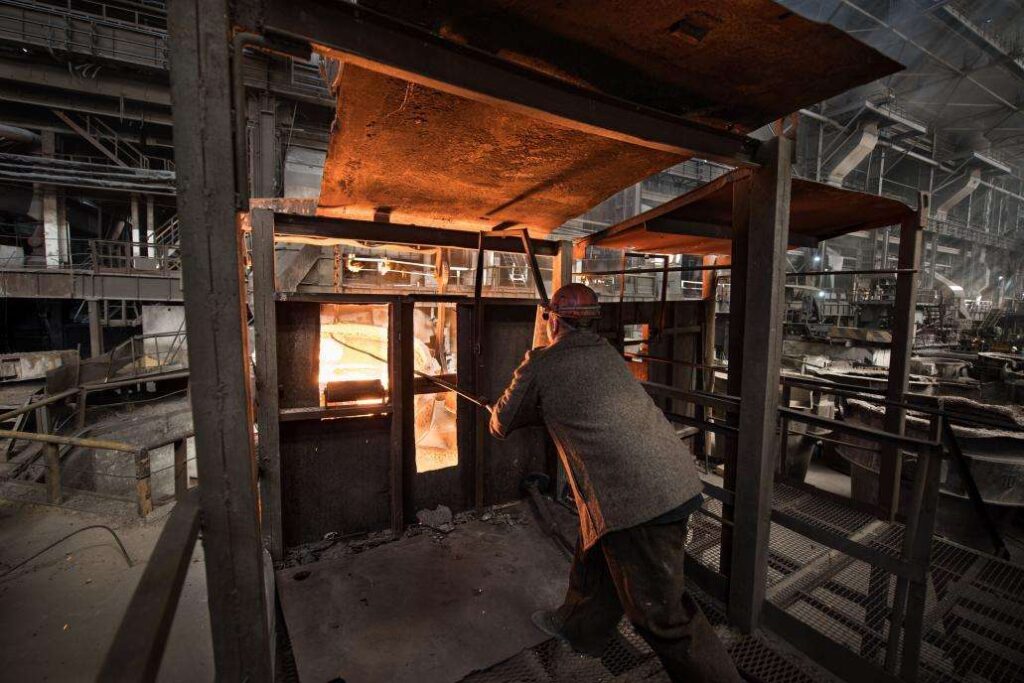
Environmental Compliance and Reporting
CEMS data is crucial for glass manufacturers because it directly affects whether the factory complies with strict environmental regulations. Through continuous monitoring, the factory can promptly detect any potential violations and take corrective measures. In addition, this data also provides support for environmental protection reports and compliance certificates, helping to maintain the company’s public image and market competitiveness.
| Features/ Industry | Application in the cement manufacturing industry | Applications in the glass manufacturing industry |
| Main pollutants monitored | NOx, SO2, CO, CO2, particulate matter | NOx, SO2, CO2, heavy metals, particulate matter |
| Key monitoring locations | Rotary kiln, cooler outlet, coal mill, and kiln tail | Glass Furnace Exhaust System |
| Technology Application | Infrared spectroscopy, chemiluminescence, ultraviolet absorption spectroscopy, etc. | Ultraviolet spectroscopy (UV), infrared spectroscopy (NDIR), chemiluminescence |
| Production process optimization | Adjust production parameters to optimize combustion efficiency | Adjust the combustion air supply and change the raw material ratio |
| Environmental Compliance and Reporting | Ensure compliance with environmental regulations and environmental reporting | Proof of environmental compliance to reduce the risk of regulatory violations |
| challenge | High temperature, dusty environment | High-temperature, corrosive gas |
| Future direction | Introducing higher-precision monitoring technology, intelligent CEMS | Technological innovation, higher measurement accuracy and reliability |
| Economic benefits | Reduce energy and raw material consumption and optimize cost-effectiveness | Reduce energy consumption and optimize production efficiency |
| Environmental benefits | Reduce harmful gas emissions and improve air quality | Improve environmental transparency and increase corporate credibility |
Challenges and Future Development of CEMS Technology
Technical Challenges
- High temperature and corrosive environment: The extremely high temperature and corrosive atmosphere of glass melting furnaces pose challenges to the materials and performance of CEMS equipment.
- Accuracy and reliability: Maintaining the accuracy and reliability of CEMS in complex industrial environments is a major challenge.
Future development
- Technological innovation: Future CEMS may adopt more advanced sensor and analysis technologies, such as laser spectroscopy and high-resolution mass spectrometry, which can provide higher measurement accuracy and better anti-interference ability.
- Integration and automation: With the advancement of Industry 4.0, CEMS may become more integrated and automated, achieving smarter data analysis and early warning systems, thereby further improving production efficiency and environmental performance.
Summarize
In the glass manufacturing industry, CEMS is not only a necessary tool for compliance but also a key technology to improve production efficiency and environmental protection. Through continuous monitoring and precise control of emissions, the glass manufacturing industry can achieve a more sustainable and environmentally friendly production method. With the advancement of technology, CEMS will play a more important role in environmental monitoring and industrial automation in the future.
The Dual Benefits for the Environment and the Economy of CEMS
Environmental benefits
- Reduce pollutant emissions:
CEMS monitors industrial emissions in real-time, allowing companies to understand the type and amount of emissions promptly so that they can take corresponding measures to reduce the emission of harmful gases and particulate matter. This is of great significance for improving air quality, reducing acid rain, and preventing ozone layer depletion.
- Promoting compliance with environmental regulations:
As global environmental regulations become increasingly stringent, companies need to ensure that their operations meet relevant environmental standards. The data provided by CEMS can help companies continue to comply with these regulations and avoid high fines and legal liabilities caused by violations.
- Improve environmental transparency:
The CEMS system can provide open and transparent environmental data to the public and regulators, increasing the credibility of enterprises. This is very important for enhancing the trust of the community and consumers and improving the public image of enterprises.
- Promoting sustainable development:
Real-time monitoring enables companies to adjust processes and reduce resource waste, thereby supporting sustainable development goals. For example, by optimizing the combustion process, energy consumption can be reduced while also lowering greenhouse gas emissions.
Economic benefits
- Optimize production process:
The real-time data provided by CEMS can help companies monitor the efficiency of the production process and identify deficiencies in energy use and raw material consumption. By adjusting these parameters, companies can reduce production costs and improve overall economic benefits.
- Reduce energy consumption:
Accurate emissions monitoring and control can help companies use energy more efficiently, such as by adjusting fuel mix or improving combustion technology, reducing energy waste and thus reducing energy costs.
- Avoid fines and compliance risks:
CEMS helps companies comply with environmental regulations, thereby avoiding high fines and related negative impacts caused by violations of environmental regulations. This is especially important for some strictly regulated industries.
- Enhance market competitiveness:
Companies that meet environmental standards are more likely to obtain environmental certification and customer favor, especially today when more and more consumers and partners pay attention to environmental protection. This can become an important competitive advantage for companies.
- Long-term return on investment:
Although the initial installation and maintenance of CEMS requires a certain amount of investment, in the long run, CEMS can bring significant economic returns to enterprises by optimizing production processes and reducing environmental risks.
The CEMS system is not only a key tool for modern industrial enterprises to meet environmental protection needs, but also an important assistant for improving economic benefits. By achieving the dual goals of environmental protection and economic benefits, CEMS helps enterprises optimize production processes while complying with regulations and achieve sustainable development. In the future, as environmental protection regulations continue to be strengthened and enterprises’ awareness of environmental protection increases, the role of CEMS will become more and more prominent, becoming a key technology to promote industrial environmental protection and improve economic benefits.
Q&A: Application of CEMS in cement and glass manufacturing industries
Question 1: What is CEMS?
Answer: CEMS, or Continuous Emission Monitoring System, is a high-tech monitoring device used to monitor the concentration and amount of pollutants in industrial emissions in real-time. It is mainly used to monitor a variety of gases such as sulfur dioxide, nitrogen oxides, carbon monoxide, carbon dioxide, and particulate matter.
Question 2: Where is CEMS usually installed in the cement manufacturing industry?
Answer: In the cement manufacturing industry, CEMS is usually installed at key locations such as rotary kilns, cooler outlets, coal mills kiln tails, etc. These locations are the main pollutant emission points in the cement production process.
Question 3: How does CEMS help the glass manufacturing industry optimize the production process?
Answer: CEMS helps the glass manufacturing industry monitor and adjust production parameters, such as combustion air supply and raw material ratio, by providing real-time emission data. This not only controls the generation of pollutants, but also optimizes energy use, reduces raw material waste, and improves production efficiency.
Question 4: What technical challenges are faced in using CEMS monitoring systems?
Answer: The main technical challenges include the stability and accuracy of the equipment in high-temperature, dusty and corrosive environments. Especially in the glass manufacturing process, high temperatures and corrosive gases can pose challenges to the performance of CEMS.
Question 5: What are the dual benefits of CEMS to the environment and the economy?
Answer: In terms of environmental protection, CEMS helps companies reduce pollutant emissions, improve air quality, and promote compliance with environmental regulations. In terms of economy, CEMS reduces energy and raw material consumption by optimizing the production process, which can reduce operating costs and improve market competitiveness in the long run.
Question 6: What are the future development directions of CEMS technology?
Answer: In the future, CEMS technology may develop towards higher measurement accuracy, reliability and intelligence. For example, advanced technologies such as laser spectroscopy and high-resolution mass spectrometry can be used to improve performance, and artificial intelligence can be integrated for data analysis and early warning to further optimize industrial emission control and production process management.
Conclusion
As environmental regulations become increasingly stringent, the application of CEMS in the cement and glass manufacturing industries has shown its irreplaceable importance. These systems not only provide companies with a means to maintain compliance but also improve economic benefits by optimizing production processes. In the future, as technology advances, CEMS will become more powerful and more widely used, ultimately driving these industries toward a greener and more efficient direction.




